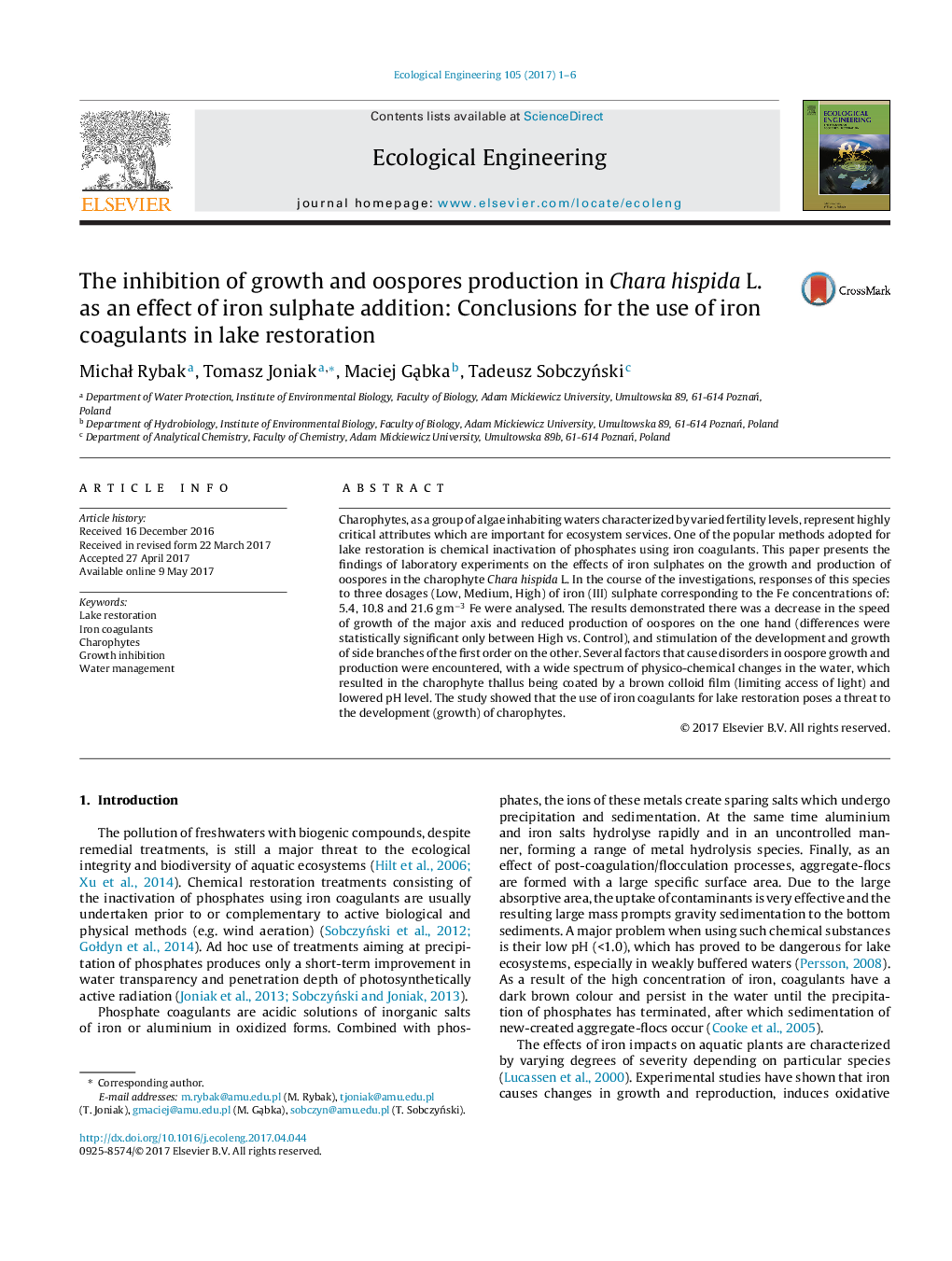| Article ID | Journal | Published Year | Pages | File Type |
|---|---|---|---|---|
| 5743592 | Ecological Engineering | 2017 | 6 Pages |
â¢Development of charophytes is under strong negative influence of phosphates coagulant based on iron.â¢Iron addition resulted in the RGR decrease and sexual reproduction limitation.â¢Simultaneously, charophytes expanded the assimilation area through the growth of new side branches.â¢The precipitation of iron was the major cause of light limitation for charophytes.
Charophytes, as a group of algae inhabiting waters characterized by varied fertility levels, represent highly critical attributes which are important for ecosystem services. One of the popular methods adopted for lake restoration is chemical inactivation of phosphates using iron coagulants. This paper presents the findings of laboratory experiments on the effects of iron sulphates on the growth and production of oospores in the charophyte Chara hispida L. In the course of the investigations, responses of this species to three dosages (Low, Medium, High) of iron (III) sulphate corresponding to the Fe concentrations of: 5.4, 10.8 and 21.6 g mâ3 Fe were analysed. The results demonstrated there was a decrease in the speed of growth of the major axis and reduced production of oospores on the one hand (differences were statistically significant only between High vs. Control), and stimulation of the development and growth of side branches of the first order on the other. Several factors that cause disorders in oospore growth and production were encountered, with a wide spectrum of physico-chemical changes in the water, which resulted in the charophyte thallus being coated by a brown colloid film (limiting access of light) and lowered pH level. The study showed that the use of iron coagulants for lake restoration poses a threat to the development (growth) of charophytes.
